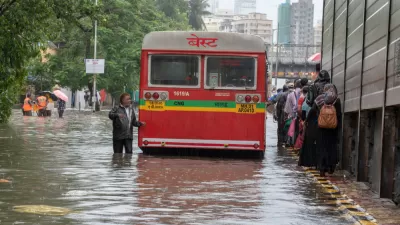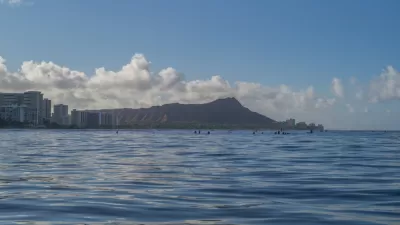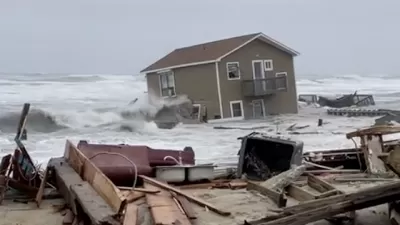A new study calls for changes to coastal management policies to better protect sandy shorelines retreating under the pressure of rising sea levels.

The reactive and piecemeal approach historically used to manage beaches in Hawaii has failed. If policies are not changed, as much as 40% of all beaches on Oahu could be lost by 2050, according to a new study by researchers at the University of Hawaii (UH) at Mānoa School of Ocean and Earth Science and Technology (SOEST). An article by Timothy Hurley shares the news of the new study.
"The team of scientists, led by graduate researcher Kammie Tavares, assessed the shoreline around Oahu that would be most vulnerable to erosion under three scenarios of sea level rise"—all estimated to occur before, and shortly after 2050, explains Hurley. The research team identified the location of shoreline hardening and beach loss and a potential timeline for increased erosion hazards. The most threatened properties fall into an "administrative erosion hazard zone," an area likely to experience erosion hazards and qualify for the emergency permitting process to harden the shoreline.
According to co-author Dr. Tiffany Anderson, assistant researcher in the Department of Earth Sciences, "We determined that almost 30 percent of all present-day sandy shoreline on Oahu is already hardened, with another 3.5 percent found to be so threatened that those areas qualify for an emergency permit today. Our modeling indicates that, as sea level rises about 10 inches (0.25 meters) by mid-century, an additional nearly eight percent of sandy shoreline will be at risk of hardening—meaning at that point, nearly 40% of Oahu’s sandy beaches could be lost in favor of hardened shorelines."
With "hardship variances," oceanfront property owners threatened by erosion have been allowed to build sea walls and other forms of shoreline armoring to protect their property. According to the study, the construction of initial sea walls destabilizes neighboring shorelines and triggers a domino effect of coastal hardening that condemns entire stretches of sandy beach to narrowing and eventual loss.
UH researchers are urging people to lobby county and state policymakers to collaborate on providing ways to help beachfront parcel owners to transition out of their precarious locations to save the sandy shoreline. Specifically, that residents support the creation of a government program to provide economic incentives tailored to individual owners and the development of a long-term plan to encourage residents to "get out of the way of our moving beaches," according to co-author Dr. Chip Fletcher, associate dean and professor at SOEST.
FULL STORY: 25 miles of Oahu beaches could be lost to coastal erosion, study finds

Study: Maui’s Plan to Convert Vacation Rentals to Long-Term Housing Could Cause Nearly $1 Billion Economic Loss
The plan would reduce visitor accommodation by 25,% resulting in 1,900 jobs lost.

North Texas Transit Leaders Tout Benefits of TOD for Growing Region
At a summit focused on transit-oriented development, policymakers discussed how North Texas’ expanded light rail system can serve as a tool for economic growth.

Using Old Oil and Gas Wells for Green Energy Storage
Penn State researchers have found that repurposing abandoned oil and gas wells for geothermal-assisted compressed-air energy storage can boost efficiency, reduce environmental risks, and support clean energy and job transitions.

Santa Barbara Could Build Housing on County Land
County supervisors moved forward a proposal to build workforce housing on two county-owned parcels.

San Mateo Formally Opposes Freeway Project
The city council will send a letter to Caltrans urging the agency to reconsider a plan to expand the 101 through the city of San Mateo.

A Bronx Community Fights to Have its Voice Heard
After organizing and giving input for decades, the community around the Kingsbridge Armory might actually see it redeveloped — and they want to continue to have a say in how it goes.
Urban Design for Planners 1: Software Tools
This six-course series explores essential urban design concepts using open source software and equips planners with the tools they need to participate fully in the urban design process.
Planning for Universal Design
Learn the tools for implementing Universal Design in planning regulations.
Ascent Environmental
Borough of Carlisle
Institute for Housing and Urban Development Studies (IHS)
City of Grandview
Harvard GSD Executive Education
Toledo-Lucas County Plan Commissions
Salt Lake City
NYU Wagner Graduate School of Public Service





























